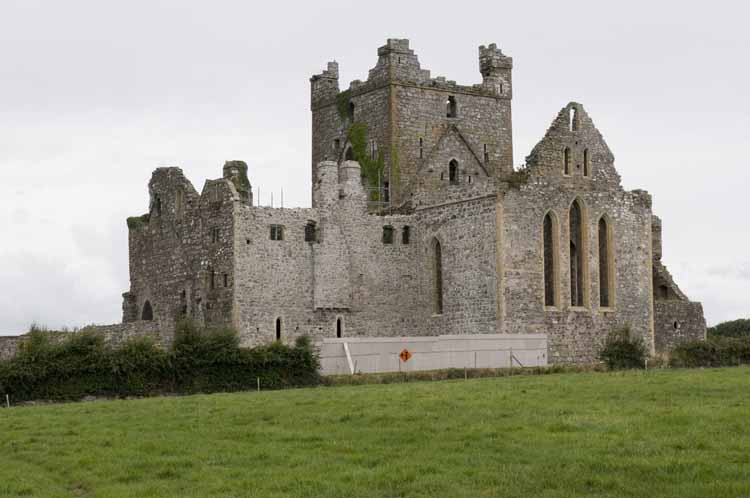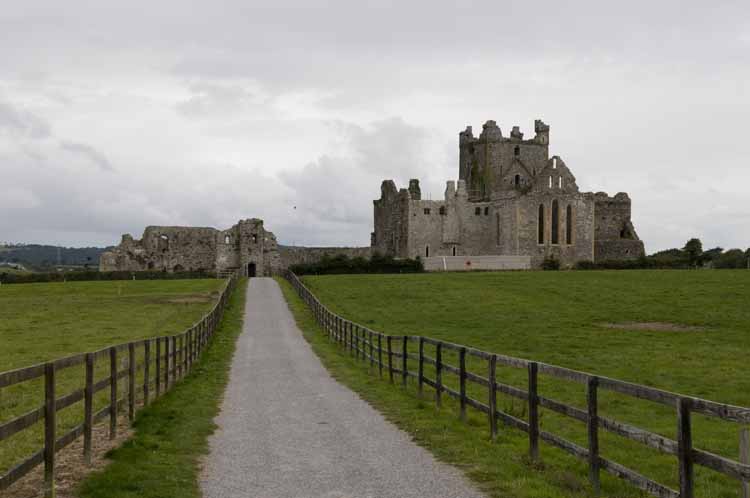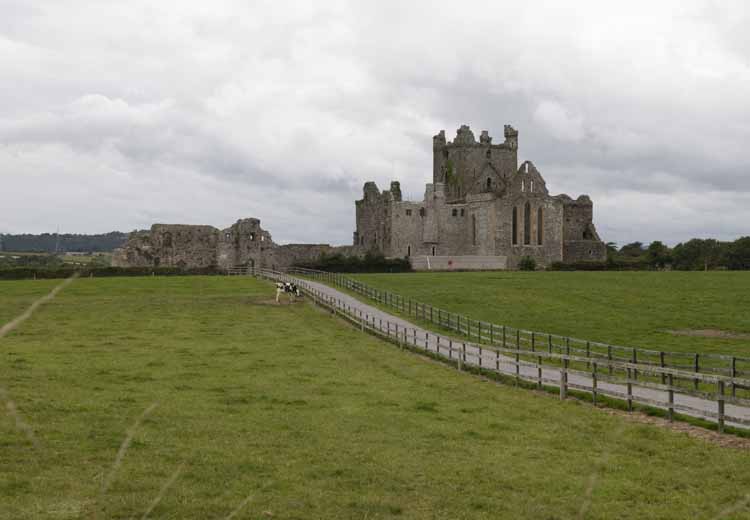Cistercian Abbey of Dunbrody, County Wexford, Ireland.
Hervey de
Montmorency's determination to endow an ecclesiastical foundation on his
fief in south Wexford illustrated the priority given to the
establishment of religious houses within feudal society. Having failed
in his attempt to attract monks to Bannow, he offered a large estate in
the manor of the Island to the monastery of Buildwas in Shropshire in
1172, for the foundation of the (Colfer 2004, 43) first Anglo-Norman
Cistercian house in Ireland. Hervey may have regarded the grant to the
Cistercians as the best way of organising part of his extensive fief.
The location of the grant along the eastern shore of Waterford Harbour
may also have been a deliberate tactic, in conjunction with Henry II's
grant to the Templars, to pacify the area and provide security for the
vital waterway. The land was offered to St Mary's Cistercian abbey in
Dublin, having originally been offered to BUildwas Abbey, and accepted
in 1182 and in 1201 the new monastery, called the Port of St Mary of
Dunbrody, was consecrated by Herlewyn, bishop of Leighlin, a nephew of
the founder. In the early thirteenth century, disputes over land as well
as some small grants from individuals resulted in variations in the
amount of land held by the abbey. In 1227, the general chapter increased
the Dunbrody estate by a grant of the impoverished abbey of Ghinewadam
in county Waterford. The use by the Anglo-Normans of existing Gaelic
territorial divisions in the process of subinfeudation and the close
link between manorial and (Colfer 2004, 44) parochial development in
medieval Ireland, combined with evidence from charters and monastic
extents, makes it possible to map the extensive medieval church lands in
the Hook area. Of twenty place-names listed in the charter to Dunbrody,
eight can be identified with modern townlands; another name, used to
describe a small river, survives in the name of Campile village (campill:
a winding inlet). When these are used in conjunction with the
possessions of the abbey at dissolution in 1537, an accurate estimate of
the lands of the monastery can be ascertained. The monastic estate
consisted of approximately 40 carucates or ploughlands; as a ploughland
was equal to about 300 statute acres (121 ha), this was the equivalent
of 13,000 acres (5,260 ha) in modern terms. The Dunbrody lands
corresponded to the medieval parish of St James and Dunbrody and part of
Killesk, with the townland of Kilmannock in the parish of Kilmokea. Dunbrody had a monastic prison on site. In 1390 David Esmond, a
commissioner of Richard II, sent to investigate extortion in Wexford,
was captured by the monks of Dunbrody and imprisoned for sixteen days.
He was only released when he swore that he would not prosecute any of
them for these proceedings. In the fifteenth and sixteenth centuries Dunbrody’s annual income was
exceedingly low, valued at £28, with a potential peace-time value of
£40. In the later middles ages Dunbrody was continually exposed to
attacks from the Kavanaghs, who made regular forays in south Wexford,
and many of its estates were waste when the monastery was dissolved in
1536. Although the community was disbanded, the local priest at Dunbrody
continued to use the title of abbot for many years to come. In 1545
Dunbrody was granted to an English soldier, Sir Osborne Etchingham.
Monastic land was often used as bait to encourage English gentry to
settle in Ireland and so reinforce the authority of the crown.
Etchingham converted the abbey into a Tudor mansion c. 1546-7. Sources:

Colfer, B. 2004. The Hook Peninsula, Cork: Cork University Press.
University of Sheffield -
The Cistercians in Yorkshire
Project.
Stalley, R. 1987. The Cistercian Monasteries of Ireland, London:
Yale University Press.
